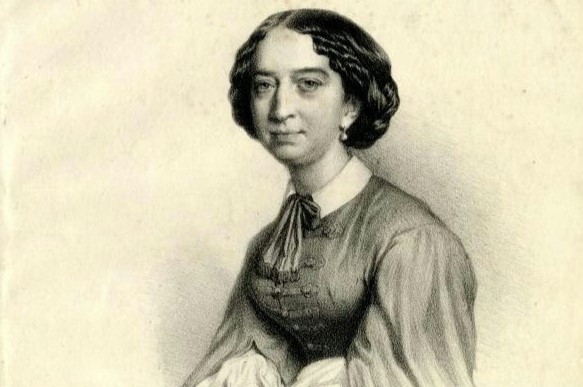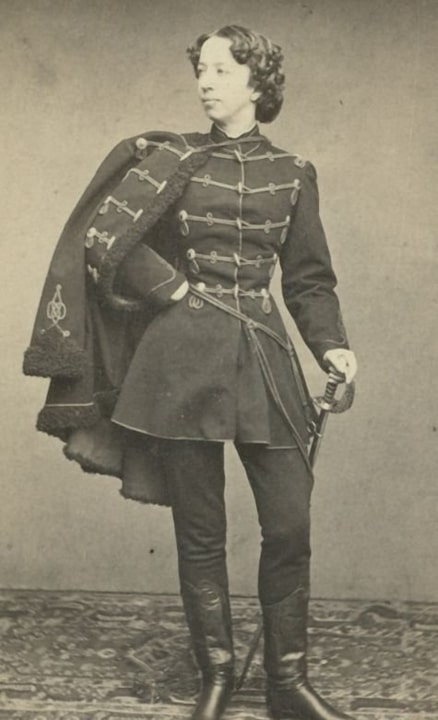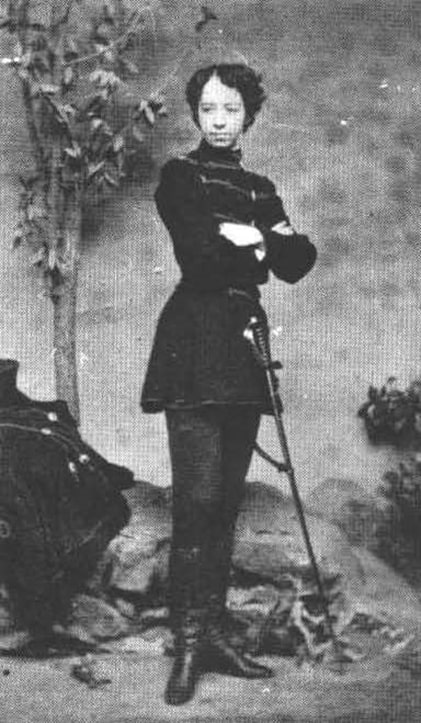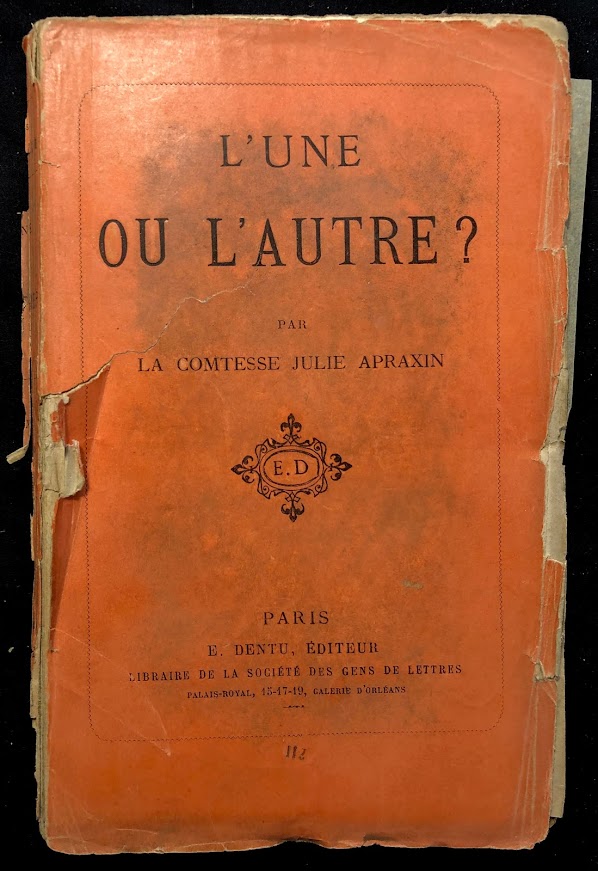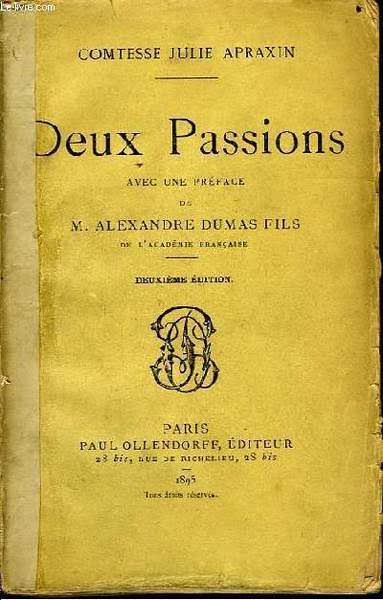- JULIA APRAXIN – THE FIRST WOMAN FREEMASON IN SPAIN - October 23, 2021
Julia Apraxin was initiated into a Masonic lodge called “Fraternidad Iberica” (Brotherhood of Iberia) in Madrid in 1880. Although born in Vienna, she felt also Hungarian, owing to her upbringing in that country and the possibility that his Hungarian foster father was, in fact, her biological parent. “Doña Julia de Rubio y Guillén, Condesa de Apratxin” was admitted into the lodge Fraternidad Ibérica (Brotherhood of Iberia) of the Grande Oriente Nacional de España (National Grand Orient of Spain) in Madrid on June 14, 1880, in accordance with contemporary Spanish Masonic protocol. The letter “t” in the countess’ surname appears to have been a slip of the pen.
Seoane, the Grand Master of the National Grand Orient of Spain, gave his authorization to initiate her by citing the lady’s gallant services for the French army as official chronicles evince. The lodge minutes show a considerable participation of Freemasons to the function and that Countess “Apratxin” adopted for herself the name “Buda.”[1] Julia Buda was merely one of the many aliases that the Countess used in her life; she had been inspired to it by the name of the former Capital city of Hungary, Buda[2], one of her places of residence and activities.
Julia’s mother had met Count József Esterházy in 1828, and after her first husband had divorced her, the two wed in 1841. Count Esterházy – we know from his diary – regarded Julia to be his own daughter.
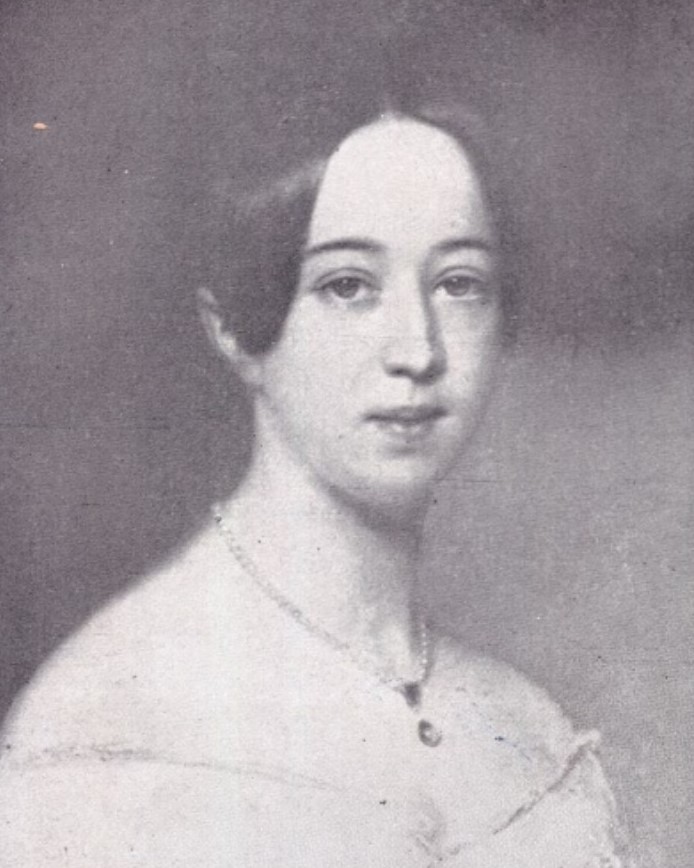
Julia Apraxin was born on October 16, 1830, in Vienna, the registered offspring of Count Alexandre Petrovich Apraxin, a Russian noble and diplomat, and Countess Hélène (Ielena) Bezobrazova, a Polish-Russian aristocratic. Julia spent her childhood and adolescence in Vienna and at the Esterhazy Castle in Cseklész, near Pozsony (today Pressburg, Bratislava), with her parents and brother Demeter .
On October 15, 1849, she married Count Arthur (Artúr) Batthyány. The couple had five children and for about ten years settled in Vienna, where they lived the glamorous life of high society, attending balls, dances, masquerades, and enjoying drives in their private carriage.
In 1853, Johann Strauss II dedicated his polka Tanzi Bäri (Dancing Bear) to Julia, metaphorically comparing her to the figure of the bear-leader for her ability to make men wanting to dance.
At the turn of the19th century, the Batthyány-Apraxin couple moved to Pest where Julia set up a salon that hosted weekly literary events aiming at bringing together the aristocracy and the intellectuals of the time.
Hungary was halfway between the fallen Revolution and Freedom Fight of 1848-49 and the Compromise (1867) when Julia Apraxin began her public life there. She had a firm grasp of the language – which she spoke with the typical strong French accent–and was a passionate supporter of the Hungarian patriotic ideal.
Julia studied the sciences and had lessons from distinguished scholars of the time. She wrote novels, short stories and plays, all of which were actually published and performed.
One of the reasons the aristocracy was upset with her was her depiction in one of her works of the superiority of the intellectuals over the aristocracy. Other factors were Julia being divorced and performing the thespian profession using the aristocratic name of “Countess Batthyány.”
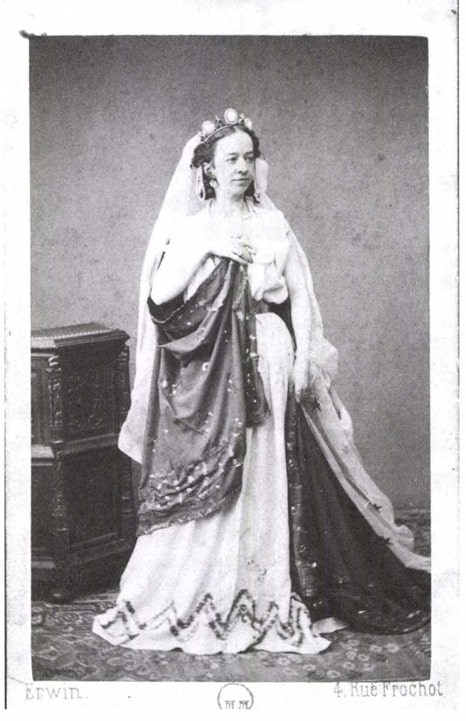
The aristocracy put pressure on the police to forbid the “Countess Julia Batthyany” from continuing going on stage, but the audiences received her performances with such enthusiasm that, despite her lack of talent, they became huge hits.
Julia Apraxin and Georg (György) Molnár, her stage director and lover, travelled to Paris on May 1, 1863 and established contacts with exiled Hungarian revolutionaries. Their leader and former governor of Hungary Louis (Lajos) Kossuth, even wrote to Prince Napoleon (Napoléon Joseph Charles Paul Bonaparte, cousin of Emperor Napoleon III) to ask to support Julia in her stage venture by proposing her to the Théâtre Français. But the recommendation only travelled as far as the Achille Ricour’s theatre for young artists (Théâtre des jeunes artistes). Photo business cards were printed which depicted Julia wearing a revolutionary Hungarian uniform and when those pictures ran out, Julia posed in a Hussar costume at the studio of the leading Parisian photographer Erwin.
French, Hungarian and Austrian press mentioned her performances, but whilst the Hungarians praised them all, the Austrians preferred to gloat over the less fortunate ones. In August 1863, Julia’s three novels earned her the membership to the Société des Gens de lettres (Society of the People of Letters); a major achievement when you think that just 66 of the 1700 French women writers were members of the Society even in 1881.
Julia also gained entry to the French aristocratic circles and lived for a while in the Parisian elite quarter of Faubourg Saint-Germain.
Julia Apraxin married Lorenzo Rubio Guillén y Montero de Espinosa (1835-1895), a Spanish cavalry captain, in a Russian orthodox ceremony in 1867. But the Catholics considered such marriage invalid and in consequence Julia’s mother cut off her monthly. Julia went to Court and won the case. But no sooner this matter had been settled that another legal battle ensued when upon the death of her mother, Julia had to reclaim her side of the inheritance from her father’s relatives.
In 1876, Julia and Lorenzo travelled to Kolozsvár (now Cluj-Napoca in Romania), where she converted to Unitarianism, divorced, and remarried Lorenzo according to Unitarian rites. The couple became free to marry with Catholics rites only on 1 February 1894, following the death in 1893 of Julia’s first husband, Artúr Batthyány. After a civil ceremony, they joined in holy matrimony in La Madeleine, one of Paris’ most distinguished churches in the French Capital’s 9th district.
While still officially residing in Paris, the couple organised a party in a luxury Madrid hotel on March 28, 1879, which the elite of the Spanish capital enthusiastically attended. There were representatives from the world of politics, science, law enforcement, and literature.
Presumably the event also provided Julia with an excellent opportunity to meet the representatives of the Masonic lodge, “Fraternidad Iberica”, thus allowing the Investigative Committee to agree the terms under which to pass a recommendation to accept her application.
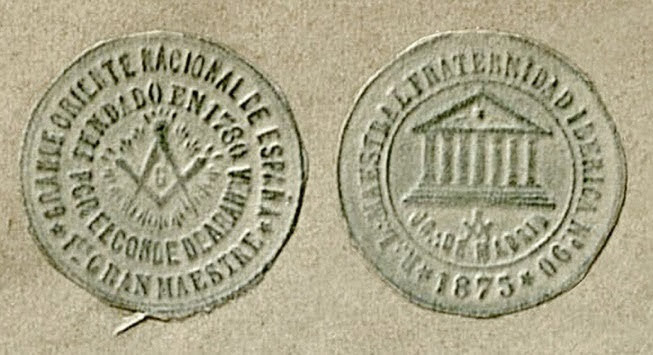
On June 14,1880, Julia Apraxin became the first woman in Spain to be initiated in a masculine Masonic lodge , to widespread fanfare. The French Masonic publication Chaîne d’Union [3]recounted the occasion in great detail :
The first initiation of a woman in Madrid
On Monday, 14th June, an extraordinary Masonic event took place. An illustrious lady, a member of the Austro-Hungarian aristocracy by birth, with Spanish connections, was admitted by Fraternidad Iberica lodge No. 90 of the Grand Orient of Spain.
There were 79 participants, many of whom represented the current 149 lodges of the Grand Orient. The Brethren were wearing ceremonial clothing, a white tie as well as profane and Masonic jewels, the majority of which were decorated with precious stones sparkling in the rays of light falling on them. We must but mention the American Freemasons, who were wearing real treasures. Let me also say that all the social classes were represented.
The neophyte was wearing a very expensive white dress and her exquisite figure invited affection and respect. The church floor was strewn with flowers–she was treading on a carpet of roses, carnations and other flowers. After the newly initiated received light among the pillars, the Worshipful Master stepped to her, led her to the altar and took her oath. Her passage under the vault of steel was strewn with flowers by the Freemasons. In the final stage of the initiation, they tied around her waist a gold-stitched-bordered white apron with beautiful Masonic jewels painted in the middle of it. An eloquent speech on the importance of the role of women in modern society by Orator Neus followed.
A wonderful buffet awaited the participants with its exquisite feast of tastes and elegance originating from one of the best restaurants of Madrid, praising the skills of the restaurateur-Brother. Upon closing the works, the participants congratulated the new Sister, confirming their further support; the event filled everyone with enthusiasm, which may open new perspectives to the female population in Spain.
Because some La Chaîne d’Union readers complained over the report’s accuracy and began spreading the rumor that the countess had been admitted only into a female adoption lodge, the Masonic journal had to confirm the story in a new article [4] which read:
“We could see her diploma, which is perfectly correct. Our Sister and her husband, who is also a Freemason, told us that the countess had been admitted in the same way as any other profane; she had been initiated in a Blue Lodge, passing all the challenges required. With no doubt, we have established that, based on the aforementioned facts, the lady is a Freemason.”
And subsequent to that statement La Chaîne d’Union issue a recommendation to the Brethren [5]to read the newest novel of the Freemason Countess:
“One or the other – the author of this work is our Sister, countess Julia Apraxin. […] Dear Brethren, do read this book […] in our July issue, we informed the readership on countess Apraxin’s initiation into the mysteries, she the wife of our revered Brother the lieutenant-colonel Lorenzo Rubio-Guillerm […]”
Apart from her initiation, we have no knowledge of whether the countess ever attended the works of the lodge. However, we know that women initiations into masculine lodges were subsequently abandoned and that a women’s adoption lodge[6] was created in 1892.
The Countess’s novel of 1891 titled L’Une ou l’Autre? (One or the other?)
recommended by Chaîne d’Union to its Freemasons readers, was a real success and was released in more than one edition. D. Adolfo S. de Figueroa translated the work with the title ¿Cuál de las dos? and the Madrid’s newspaper El Imparcial (The impartial) serialised it in March 1881. The newspaper later published the novel as a book.
Julia’s husband was found dead on 13th October 1895, on the fast train to Bayonne. The eulogy published by “Doña Julia, Condesa de Apraxin” in “La Correspondencia de España” indicated Montserrat Church, 25 October, 1895, as the place where the Mass was celebrated.
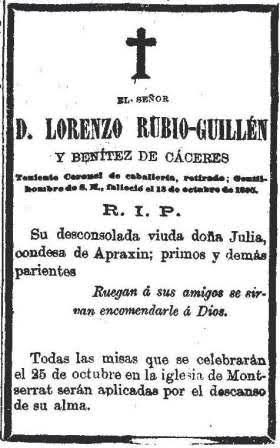
We know little about what happened to Julia after her husband’s death. She probably lived in Madrid for the rest of her life, but neither the Parisian nor the Spanish press mentioned her again.
The weekly Catholic publication La Lectura Dominical reported her death on the 24th May,1913 with the following words: “The pious Apraxin Julia, Countess of Apraxin, [died] at the age of eighty-three.” Thus we may assume that Julia Apraxin’s death occurred between 16th and 23rd May, 1913.
To be admitted to Freemasonry, a woman of that time had to rely on strong support and demonstrate merit. Julia Apraxin’s initiation documents, show that the Grand Master Seoane regarded her service in the French Army as a deserving circumstance. This may indeed have been one of the reasons, because Julia’s lover, György Molnár, wrote in his memoirs that while living in Paris, she had established, ran, and funded a Red Cross team that operated during the Carlist War.
It is also interesting to note that some of the individuals associated with Julia Apraxin during her life were themselves Freemasons, like her “father by name” Count Alexandre Petrovich Apraxin, the former Governor of Hungary Lajos Kossuth from whom she received a letter of support, three of her lawyers, Max Neuda, Dániel Molec and Károly Eötvös (who acquitted the falsely accused Jews in the famous Tiszaeszlár blood libel trial).
However, for the French Masonic newspaper La Chaîne d’Union, it was her husband’s high Masonic office that proved the decisive factor in Julia’s admission into the Order.
There is also the question of where Julia’s beautiful apron and diploma of her initiation have disappeared to.
Maybe we shall never be able to lift this veil of mysteries.

[1] Spanish sources often mistakenly consider it as “Buddha”.
[2] Former capital of Hungary, Buda united with Pest and Óbuda on 1 January, 1873 to become the new capital under the name “Budapest”
[3] La Chaîne d’Union, 1880. VI., pp. 207-208.
[4] La Chaîne d’Union, 1880. VIII-IX., pp. 233-234.
[5] La Chaîne d’Union, 1880. XI-XII., p. 323.
[6] Snoek, J. A. M.: Initiating Women in Freemasonry, 2012, Leiden, Brill, p. 201.
Photos library: https://photos.app.goo.gl/5uVSr24SUi41s7bT9

